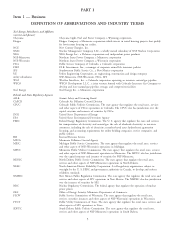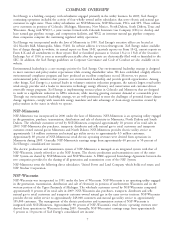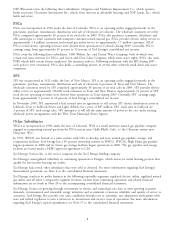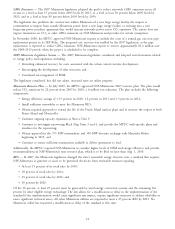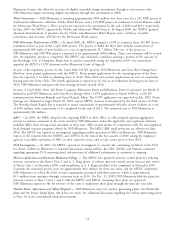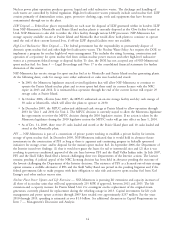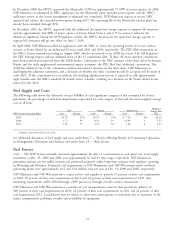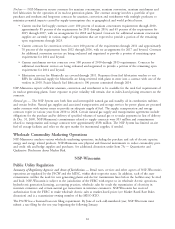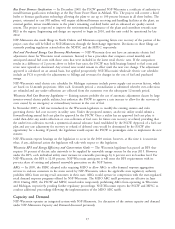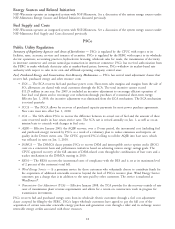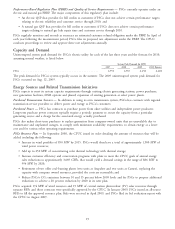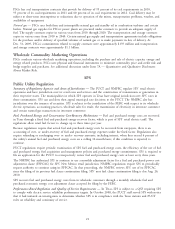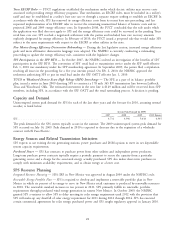Xcel Energy 2009 Annual Report Download - page 22
Download and view the complete annual report
Please find page 22 of the 2009 Xcel Energy annual report below. You can navigate through the pages in the report by either clicking on the pages listed below, or by using the keyword search tool below to find specific information within the annual report.GHG Emissions — The 2007 Minnesota legislature adopted the goal to reduce statewide GHG emissions across all
sectors to a level at least 15 percent below 2005 levels by 2015, to a level at least 30 percent below 2005 levels by
2025, and to a level at least 80 percent below 2005 levels by 2050.
The legislation also prohibits the construction within Minnesota of a new large energy facility, the import or
commitment to import from outside Minnesota power from a new large energy facility, or entering into a new
long-term power purchase agreement that would increase statewide power sector CO2 emissions. The statute does not
impose limitations on CO2 or other GHG emissions on NSP-Minnesota and provides for certain exemptions.
In November 2008, the MPUC approved NSP-Minnesota’s request to include the costs of a natural gas cast iron pipe
replacement project in its SEP Rider. The proposed cost recovery was enabled by the 2007 legislation, as the pipe
replacement is expected to reduce GHG emissions. NSP-Minnesota expects to recover approximately $1.4 million over
the 2009-2013 period, when the project is scheduled to be complete.
2009 Minnesota Legislative Session — The 2009 Minnesota legislature considered and adopted several measures related
to energy policy and regulation, including:
• Permitting enhanced recovery for costs associated with the urban central corridor development;
• Encouraging the development of solar resources; and
• Continued encouragement of DSM.
The legislature considered, but did not adopt, increased taxes on utility property.
Minnesota Resource Plan — In July 2009, the MPUC approved NSP-Minnesota’s 2007 resource plan. The plan would
reduce CO2 emissions by 22 percent from 2005 by 2020, a 6 million ton reduction. The plan includes the following
components:
• Energy efficiency savings of 1.15 percent in 2010, 1.2 percent in 2011 and 1.3 percent in 2012;
• Install sufficient renewables to meet the Minnesota RES;
• Obtain required approvals to extend the life of the Prairie Island nuclear plant and to increase the output at both
Prairie Island and Monticello;
• Continue ongoing capacity expansion at Sherco Unit 3;
• Continue to investigate repowering Black Dog Units 3 and 4, and provide the MPUC with specific plans and
timelines for the repowering;
• Obtain approval for the 375 MW intermediate and 350 MW diversity exchange with Manitoba Hydro
beginning in 2015; and
• Continue to ensure sufficient transmission available to deliver generation to load.
Additionally, the MPUC required NSP-Minnesota to consider higher levels of DSM and energy efficiency and provide
recommendations in NSP-Minnesota’s next resource plan, which is to be filed no later than Aug. 1, 2010.
RES — In 2007, the Minnesota legislature changed the state’s renewable energy objective into a standard that requires
NSP-Minnesota to generate or cause to be generated electricity from renewable resources equaling:
• At least 15 percent of its retail sales by 2010;
• 18 percent of retail sales by 2012;
• 25 percent of retail sales by 2016; and
• 30 percent by 2020.
Of the 30 percent, at least 25 percent must be generated by wind energy conversion systems and the remaining five
percent by other eligible energy technology. The law allows for a modification or delay in the implementation of the
standard if the implementation would cause significant rate impact, require significant measures to address reliability or
raises significant technical issues. All other Minnesota utilities are required to meet a 25 percent RES by 2025. No
Minnesota utility has requested a modification or delay of the standard at this time.
12



